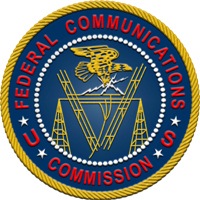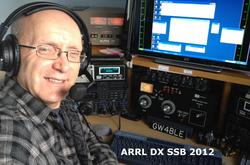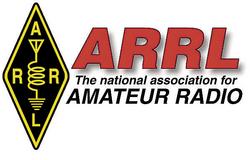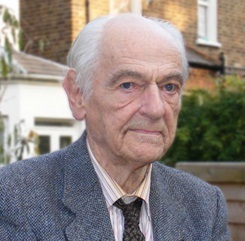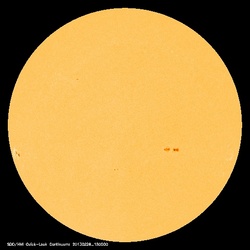 February 28, 2013 John E. Ross, KD8IDJ, Editor
| |||||||||
+ Available on ARRL Audio News. + FCC Enforcement News: FCC Issues $10,000 Fine to Missouri Man for Unlicensed Operation on 14.312 MHz On February 25, the FCC issued a Notice of Apparent Liability for Forfeiture (NAL) in the amount of $10,000 to Jared A. Bruegman, ex-KC0IQN, of Bolivar, Missouri. The FCC said that Bruegman "apparently and willfully violated Section 301 of the Communications Act of 1934, as amended by operating an unlicensed radio transmitter on the frequency 14.312 MHz in Bolivar, Missouri." Bruegman -- who does not currently hold an Amateur Radio license -- was operating in the phone portion of the 20 meter band that is assigned to the Amateur Radio Service on a primary basis; his Amateur Radio license expired in 2010. As a former Technician class licensee, he did not have privileges to operate in that portion of the 20 meter band when he held an Amateur Radio license.
In December 2012, the FCC's office in Kansas City received a complaint from an Amateur Radio operator, reporting interference on 14.312 MHz. Upon investigation, agents from that office heard a male voice transmitting on the frequency 14.312 MHz. Using direction finding equipment, the agents located the source of the radio frequency transmissions to a transmitting antenna mounted on a pole next to Bruegman's residence. The agents determined that the signals on 14.312 MHz exceeded the limits for operation under Part 15 of the Commission's rules and therefore a license was required to transmit. The agents further discovered that Bruegman did not hold a license to operate a radio transmitter on 14.312 MHz at or near that location. The agents determined that the source of the transmissions was coming from an unlicensed radio transmitter from a bedroom in Bruegman's residence. "Mr Bruegman was the only person present in the bedroom and the only male in the residence during the inspection," the NAL stated. "Mr Bruegman admitted to the agents that he owned the radio transmitter. The agents observed that the transmitter was turned on and tuned to 14.311 MHz. Mr Bruegman told the agents that he had no current Commission licenses, but that he previously held an Amateur Radio license, call sign KC0IQN. Mr Bruegman told the agents he would remove the microphone from his transmitter and only use it as a receiver." Section 503(b) of the Communications Act provides that "any person who willfully or repeatedly fails to comply substantially with the terms and conditions of any license, or willfully or repeatedly fails to comply with any of the provisions of the Act or of any rule, regulation, or order issued by the Commission thereunder, shall be liable for a forfeiture penalty." In addition, Bruegman was found to be in violation of Section 301 of the Communications Act, stating that "no person shall use or operate any apparatus for the transmission of energy or communications or signals by radio within the United States, except under and in accordance with the Act and with a license granted under the provisions of the Act." Bruegman has until March 27, 2013 to pay the forfeiture in full, or file a written statement seeking its reduction or cancellation. + FCC News: FCC Proposes More Spectrum at 5 GHz for Unlicensed Broadband
On February 20, the FCC released a Notice of Proposed Rulemaking (NPRM) in ET Docket No. 13-49, seeking to revise the Part 15 rules governing unlicensed national information infrastructure (U-NII) devices in the 5 GHz band. These devices presently operate in the frequency bands 5.15- 5.35 GHz and 5.47-5.825 GHz. They use wideband digital modulation techniques to provide a wide array of high data rate mobile and fixed communications for individuals, businesses and institutions. Slightly different rules apply to 5.825-5.85 GHz. Among the changes being proposed are two additional bands totaling 195 MHz for unlicensed operation: 5.35-5.47 GHz and 5.85-5.925 GHz. The Amateur Radio Service has a secondary allocation at 5.65-5.925 GHz, including an Amateur Satellite Service uplink allocation of 5.65-5.67 GHz and a downlink allocation of 5.83-5.85 GHz. Read more here. + On the Air: ARRL International DX Phone Contest: March 2-3 With the CW portion of the ARRL DX Contest now a series of fading dits and dahs in the memories of participants, preparations for the Phone portion of the ARRL International DX Contest the weekend of March 2-3 are already underway. The high bands were in good form for the CW contest two weeks ago, with many stations reporting hundreds of QSOs on 15 and even 10 meters. Will these good conditions last into early March? Find out!
Just like the CW DX Contest, the Phone competition is relatively easy: US and Canadian stations only work DX, and DX stations only work US and Canadian stations. The contest exchange is a signal report and your state or province for US and Canadian stations, while DX stations send signal reports and their transmit power. The 2013 ARRL International DX SSB Contest runs from 0000 UTC Saturday, March 2 through 2359 UTC Sunday, March 3. Logs must be e-mailed or postmarked no later than 2359 UTC Tuesday, April 2, 2013. Submit your Cabrillo-formatted electronic logs via e-mail; paper logs should be sent to ARRL DX Phone Contest, 225 Main St, Newington, CT 06111 USA. + ARRL Recognizes: Nominations Now Open for ARRL Technical and Educational Awards
Each year, the ARRL Board of Directors has the opportunity to select recipients for a number of awards in various categories that honor Amateur Radio operators. The nomination period is now open for the ARRL awards, which are designed to recognize educational and technological pursuits in Amateur Radio, including an award that honors a young Amateur Radio operator. ARRL members may nominate hams for the Herb S. Brier Instructor of the Year Award, the Hiram Percy Maxim Award, the ARRL Microwave Development Award, the ARRL Technical Service Award, the ARRL Technical Innovation Award and the Knight Distinguished Service Award. Read more here. + ARRL Executive Committee to Meet in Texas Next Month
The ARRL Executive Committee will meet Saturday, March 9 in Irving, Texas. ARRL President Kay Craigie, N3KN, serves as Chairman of the Executive Committee. Five Division Directors who are elected by the ARRL Board of Directors are also on the committee: Northwestern Division Director Jim Fenstermaker, K9JF; Central Division Director Dick Isely, W9GIG; Rocky Mountain Division Director Brian Mileshosky, N5ZGT; Pacific Division Director Bob Vallio, W6RGG, and West Gulf Division Director David Woolweaver, K5RAV. ARRL Chief Executive Officer David Sumner, K1ZZ, and ARRL First Vice President Rick Roderick, K5UR, are non-voting members of the Executive Committee. Click here for the meeting's agenda. + Silent Key: Pat Hawker, G3VA (SK)
RadCom columnist and RSGB Life Vice President Pat Hawker, G3VA, of London, England, passed away February 21. He was 90. For 50 years -- 1958-2008 -- Hawker penned the bi-monthly "Technical Topics" column in RadCom, the member journal of the Radio Society of Great Britain, focusing on many new techniques and devices that came into being and were enjoyed by radio amateurs in the second half of the 20th century. Born in Minehead, Somerset in 1922, Hawker's schoolboy interest in radio never left him. He heard his first amateur station on 20 meters in the autumn of 1935. He obtained the "artificial aerial" license 2BUH at age 14 and became G3VA in October 1938, at the then-minimum age of 16. Hawker was involved in many aspects of radio, beginning in World War II as a member of the Radio Security Service (RSS) and its connections to MI5 and MI6. After the Allied invasion of Europe, he spent time with British intelligence services, as well as time with Holland's Bureau of National Security. In 1948, Hawker became an assistant to RSGB General Secretary John Clarricoats, G6CL (SK).Read more here. Solar Update
Tad Cook, K7RA, reports: This past week, we saw a decline in the solar and geomagnetic indices: The average daily sunspot number dropped nearly 21 points to 57.7, while the average daily solar flux softened by 4.7 points to 100.9 and the average daily planetary A index declined 6.4 points to 5.1. This isn't much of a change, but geomagnetic activity was low already, and this is even lower. The predicted solar flux for the near term is 105 on February 28, 110 on March 1-3, 105 on March 4-6, 100 on March 7, 95 on March 8-14, 100 on March 15-16, 105 on March 17, and rising to 110 on March 18-20. The solar flux then reaches a peak of 120 on March 25-27, and on March 28-April 6, it looks like it will hover around 113. The predicted planetary A index is 5, 12 and 8 on February 28-March 2, 5 on March 3-4, 8 on March 5, 7 on March 6-7, 5 on March 8-10, 7 on March 11-12, and back down to 5 on March 13-20. This weekend is the ARRL International Phone DX Contest, which runs from 0000 UTC March 2 to 2359 UTC March 3. Look for more on the ARRL website on Friday, March 1. For more information concerning radio propagation, visit the ARRL Technical Information Service Propagation page. + Hammond Manufacturing to Take Over Dahl Transformer Line
Hammond Manufacturing of Cheektowaga, New York, has announced that it will take over the Peter W. Dahl line of transformers from Harbach Electronics. Upon his retirement in 2007, Peter Dahl, K0BIT (SK), sold his company to Harbach Electronics, but earlier this month, that company announced that it would no longer support Dahl products and was in negotiations with other manufacturers to take over the Dahl product line of transformers and magnetics. According to both Harbach Electronics and Hammond Manufacturing, finalization of the acquisition and transfer of assets will take place over the next few weeks, with the transfer to be completed by March 31, 2013. This Week in Radiosport This week:
Next week:
All dates, unless otherwise stated, are UTC. See the ARRL Contest Branch page, the ARRL Contest Update and the WA7BNM Contest Calendar for more information. Looking for a Special Event station? Be sure to check out the ARRL Special Event Stations web page. Upcoming ARRL Section, State and Division Conventions and Events
To find a convention or hamfest near you, click here. ARRL -- Your One-Stop Resource for Amateur Radio News and Information Join or Renew Today! ARRL membership includes QST, Amateur Radio's most popular and informative journal, delivered to your mailbox each month. Subscribe to NCJ - the National Contest Journal. Published bi-monthly, features articles by top contesters, letters, hints, statistics, scores, NA Sprint and QSO Parties. Subscribe to QEX -- A Forum for Communications Experimenters. Published bi-monthly, features technical articles, construction projects, columns and other items of interest to radio amateurs and communications professionals. Free of charge to ARRL members: Subscribe to the ARES E-Letter (monthly public service and emergency communications news), the ARRL Contest Update (bi-weekly contest newsletter), Division and Section news alerts -- and much more! Find us on Facebook. Follow us on Twitter. ARRL offers a wide array of products to enhance your enjoyment of Amateur Radio. Donate to the fund of your choice -- support programs not funded by member dues! Click here to advertise in this newsletter (subject to space availability). | |||||||||
